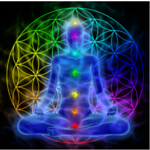
In the preface to Choreutics, Laban defines “choreography” as the “designing or writing of circles.” While we use the word today to designate composing dances, Laban was obviously familiar with the origins of the term, which come from two Greek words – khoros and graphein.
Khoros refers both to the Greek chorus and to the circular space in which they danced, while graphein obviously means to write. Laban extends the “writing of circles” to mean notating dance and movement and uses this as a way to mention his own system of dance notation.… Read More









